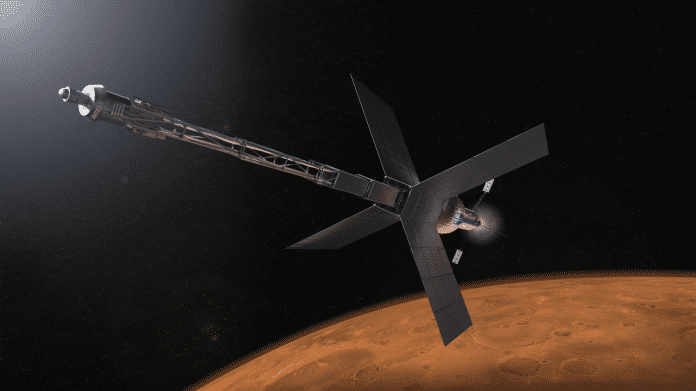While space visionaries dream of manned missions to Mars, the proper propulsion has yet to be invented. NASA pinned its hopes on nuclear technology.
reading time:
12 Min.
In Pocket save on computer

(Image: NASA)
- John Streck
- Arne Grävemeyer
Mars is our direct outer neighbor in the solar system and is considered the next long-term goal of manned space travel. On its orbit, the red planet approaches our earth to a distance of about 56 million kilometers. At least since the success of the Apollo 11 mission in 1969, when American astronauts set foot on the moon for the first time, visiting and exploring Mars has been one of the most important goals of space organizations. Viking 1, the first Mars probe, landed on July 20, 1976 and sent photos of the surface of the neighboring planet.
But a human crew’s journey to the red planet is far more complicated. The sending of large spaceships through our solar system has failed to this day due to a central problem: there is a lack of sufficiently powerful propulsion systems.
In science fiction series and films, interplanetary travel is much easier than in reality. Whether with the warp drive from Star Trek or by jumping into hypothetical hyperspace, as in the Star Wars universe: Overcoming gigantic distances is rarely a problem in fictional worlds.
